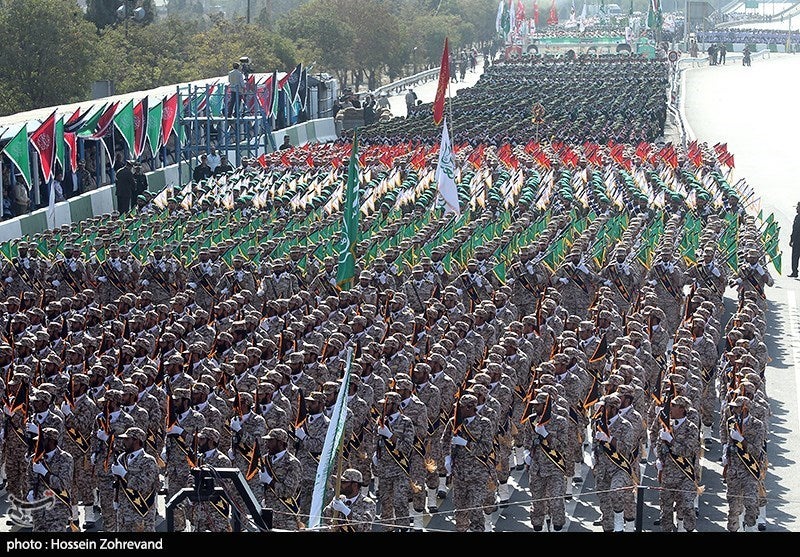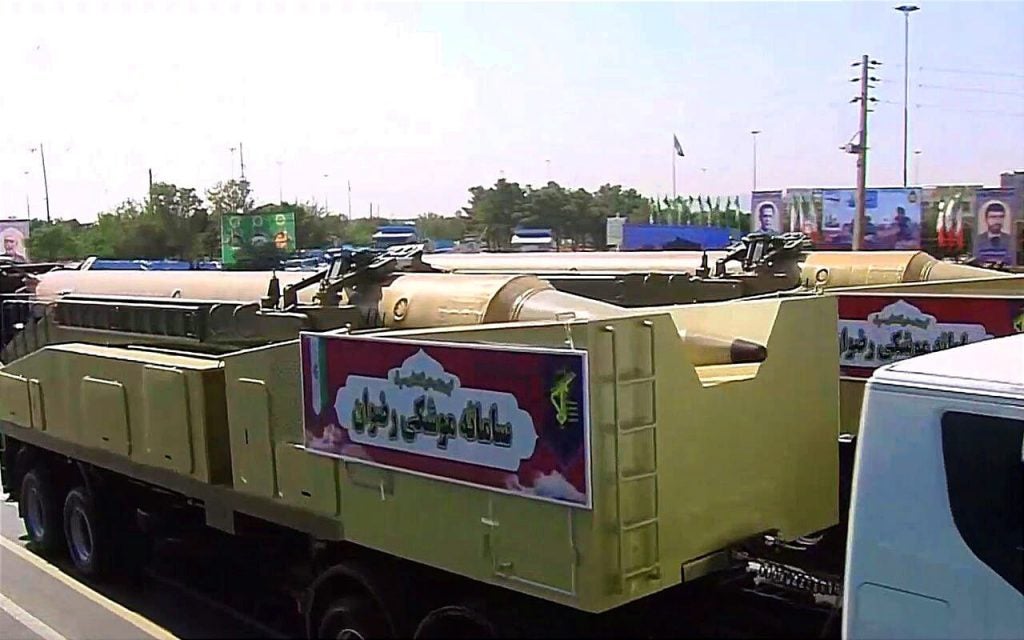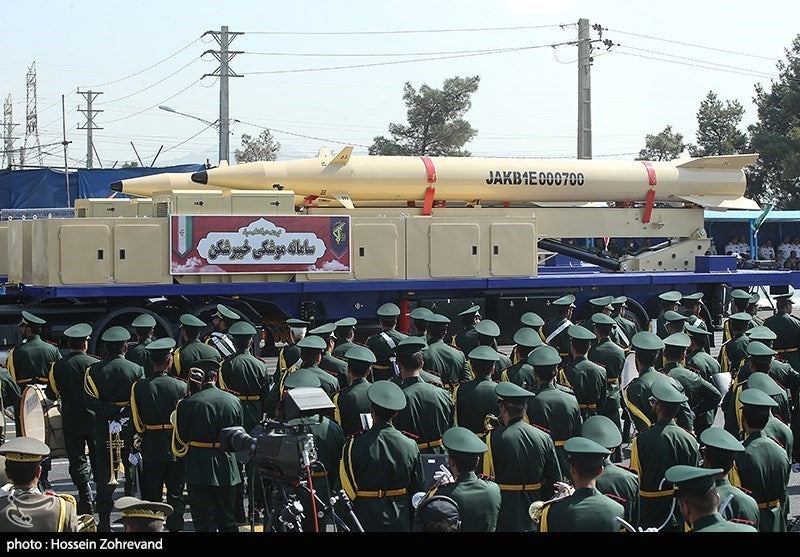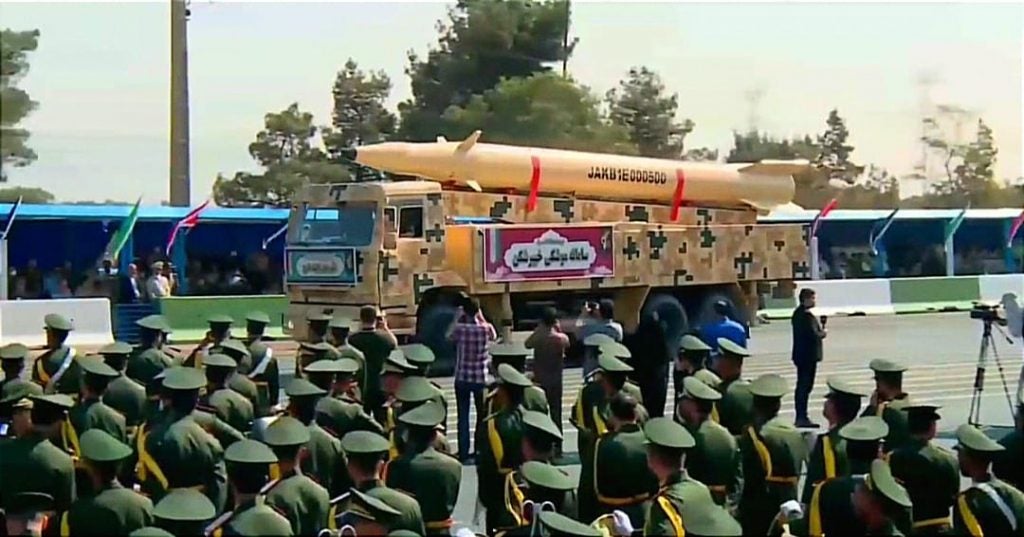Iran Unveils A New Surface-to-Surface Ballistic Missile During Sacred Defense Week
Each year on the anniversary of the Iran-Iraq war, a military parade is held in Tehran, the capital of Iran, this year the parade took place despite ongoing domestic protests. Senior military leaders, including the commander-in-chief of the IRGC, Major General Hossein Salami, and the Chief of General Staff of Iran, Major General Mohammad Bagheri, attended the event held in front of Imam Khomeini’s mausoleum. As part of the ceremony, the Iranian army’s military units, accompanied by missiles, tanks, and various weapons systems led a procession past high-ranking military leaders before showcasing their most recent military and defense achievements in Baharistan Square next to the Iranian Parliament.

The Rezvan ballistic missile, which in Farsi means paradise, was unveiled by the Islamic Revolutionary Guards (IRGC) Aerospace Force during the parade in Tehran. The Rezvan missile, developed and produced domestically by the IRGC’s Aerospace Department, is referred to as a medium-range surface-to-surface ballistic missile by Iranian media. The missile with a single-stage engine produces the required thrust using liquid fuel, according to the Tasnim news agency. The Rezvan missile may be fired from both fixed and mobile ground vehicles and has a maximum operating range of 1,400 kilometers. The Rezvan, a “precision-guided and state-of-the-art” missile, can enter the atmosphere at a speed eight times faster than the speed of sound, according to the claims of Major General Hossein Salami, Commander of the IRGC.

The Islamic Revolutionary Guards (IRGC) Aerospace Force has also unveiled for the first time a new prototype of the Sevvom-e Khordad mobile medium-range air defense missile system, according to Mehr News Agency. The name “Sevom Khordad” refers to the third day of the third month of the Iranian calendar, which corresponds to the liberation of Khorramshahr during the Iran-Iraq War. Mehr claims that this air defense system is capable of countering a variety of air targets such as helicopters, fighters, unmanned aerial vehicles, and cruise missiles.
The Kheibarshekan missile system, which was first unveiled in February of this year, was also on display during the parade. The Iranian Revolutionary Guards Aerospace Forces designed and manufactured the missile, which has a range of 1,450 kilometers. According to Revolutionary Guards Aviation Forces Commander Brigadier General Amir Ali Hajizadeh, the missile has a solid-fuel rocket engine and can bypass air defense systems due to its maneuverability. Hajizadeh claimed that with the changes made in the design of the Kheibarshekan missile, its weight has been reduced by one-third when compared to similar missiles, and the preparation time for launching the missile is six times faster when compared to conventional missiles.

Iran has one of the most varied missile arsenals in the Middle East and has been producing missiles since the 1980s. Despite discord with Western nations, particularly the United States, regarding its ballistic missile program, the Iranian government continues to use and develop cruise missiles with a range of 2,500 kilometers as well as various kinds of short-range (300-700 kilometers) and medium-range (2,000 kilometers) ballistic missiles. The acquisition of these missiles is seen by Western countries and their regional allies as posing a serious threat, but Iran maintains that its missile program is only a deterrent and will not engage in any negotiations.

